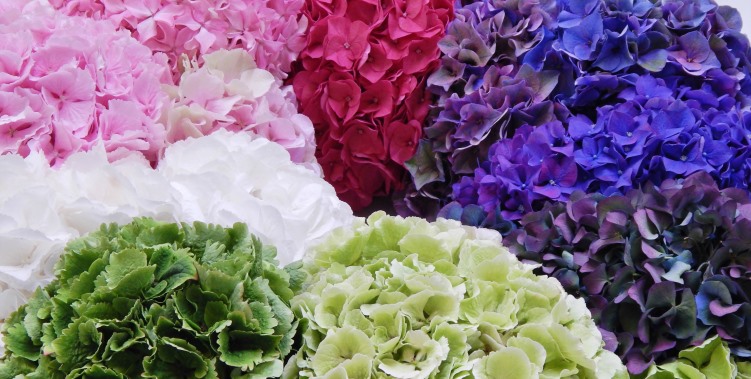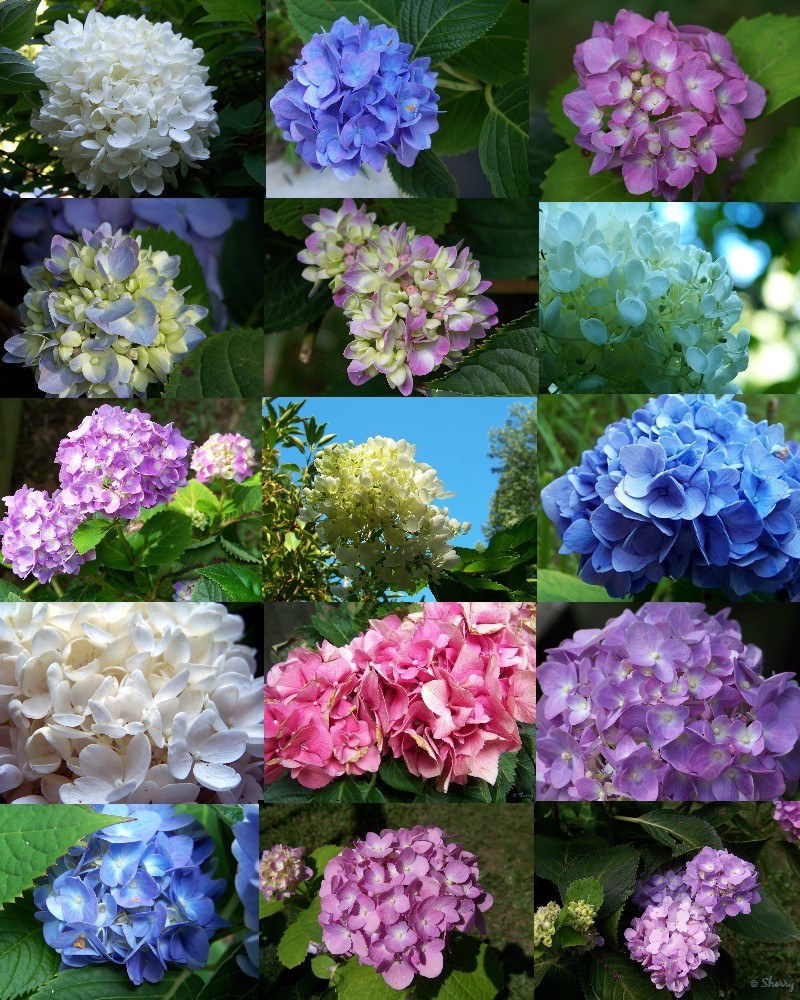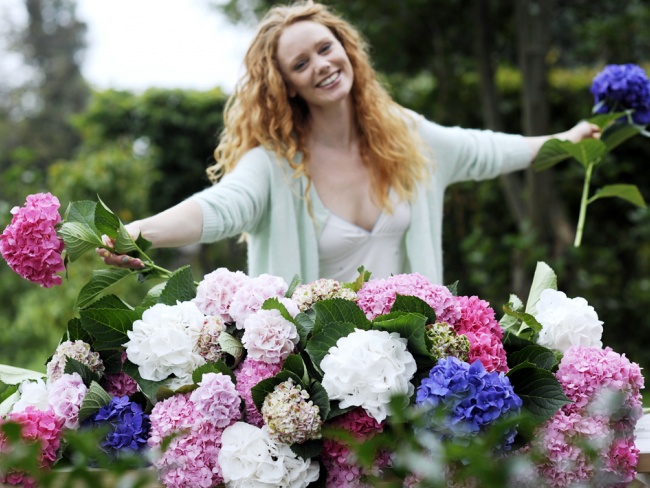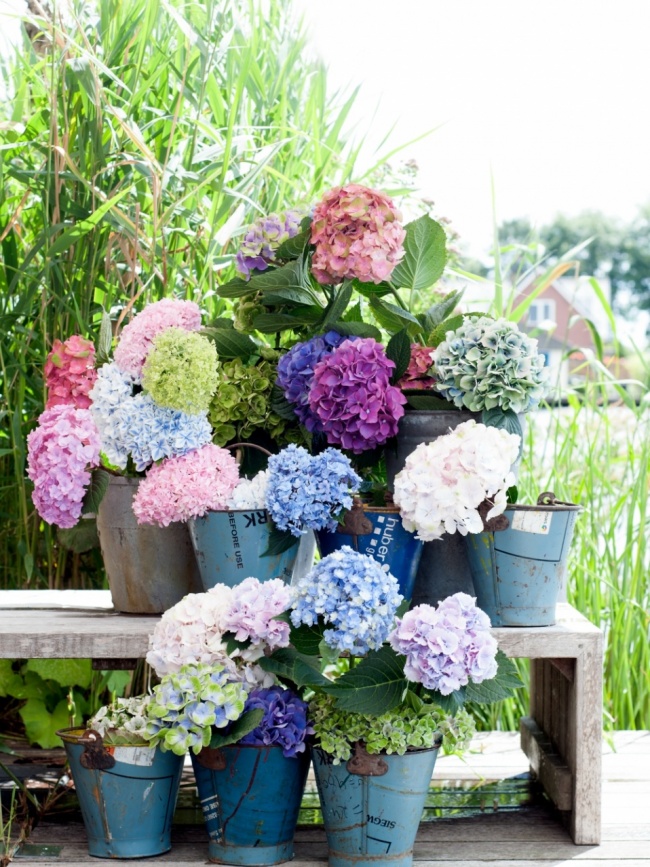Meet The Chameleon of the Flower Garden…

Like a chameleon, these flowers have the ability to change their colour. A plant that flowered in shades of blue one year might turn pink the following year and vice versa. The transformation is dependent on the variety, to start off with. Only plants that are marked as flowering in blue by the breeder are able to change colour; only they contain the primary plant pigment delphinidin to produce blue flowers. But that is just part of the whole deal.
The hydrangea, also called hortensia, had a time when it was laughed at as grandmother’s favourite garden plant. Today, it is not only trendy but is ideal to accentuate any kind of interior design from stylish to ubercool. The lush, ball-shaped flower heads in gorgeous shades from light pink to violet, white to bright intense blue, or green combined with a palette of colours represent a growing trend.

To produce blue flowers, the plants need acidic soil to grow in with a pH value in the range between 4 and 4.5; and the soil must contain aluminium. The two things are equally necessary; one without the other will leave you in the pink. Heavy soils have a naturally higher pH value and any aluminium contained in such soil is not available to plants.
You have a likely chance to outwit nature with potted plants. Use an acidic humus or compost commonly used for rhododendron. Buy aluminium sulphate in the drugstore (alum). Scatter it on the soil in April and again in September. Dissolve and add some alum to the water every two weeks. And only use lime-free water.
To enjoy the colourful aspects of hydrangeas you don’t need a garden. Potted hydrangeas will give a cheerfully relaxed atmosphere on terraces, balconies or an entrance area. Hydrangeas are not too choosy, any semi-shaded corner will do for them and they are real eye-catchers.

Hydrangeas are deciduous plants with leaves that grow up to 7 cm wide and up to 20 cm long. The fluffy flower balls adorn them from June through September. In full bloom, large parts of the foliage are completely covered. The visible flowers are actually a sham; they are made up of petal-like sepals while the real flowers hide in the middle of the ball.
Hydrangeas don’t have to be planted in groups or as part of an ensemble. Their compact growth and colourful flowers show off to advantage in a single plant, too. Hydrangeas love it light and cool inside. Outside, they prefer a sheltered, lightly shaded, airy place. If possible, don’t expose them to midday sun; they don’t die of it, though they will need a lot of water, but the colour of the flowers will fade in the harsh light. Moderate temperatures work well for them and 20 °C are perfect.

The Latin name Hydrangea is made up from Greek hydro (water) and angeion (vessel) for the form of the petals. The plants like regular watering with lime-free water but should not be left standing in water as their roots may rot. The flower vessels are there to collect moisture, too, as they supply the flowering plant with additional water. When using fertiliser or plant food with the blue varieties, it is necessary to choose one with low phosphorus content. Phosphorus chemically binds aluminium needed to bring out the blue colour.

Comments are closed.